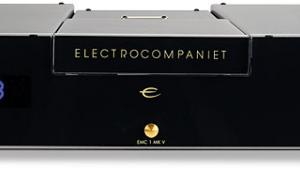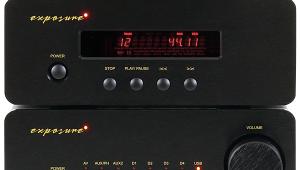Sony Scd Xa5400es (£1200)
Just occasionally very creative people can pair two otherwise completely incongruous items and come up with something truly special. Take strawberries and cream: who would have thought mixing a ground fruit with the soured milk of a lactating mammal would sire an international tennis tournament and two weeks of eastern European girls running around in short skirts? Marvellous. But an SACD player with a traditionally video-centric HDMI connection? I’m not so sure.
The reason is multichannel SACD audio and getting that data to an external DAC with almost zero jitter. As most plain vanilla HDMI connections have the jitters worse than a wino on a Sunday morning, this involves a proprietary clock-synching system in both source and DAC, launched here by Sony under the acronym HATS or High quality digital Audio Transfer System [see PM’s boxout, below]. The aim is near jitter-free DSD multichannel audio over a single and commonly available cable.
SPREADING THE WORD
Sony has agreed to licence HATS technology to several high-end audio manufacturers while demonstrating the benefits inside its own STR-DA5400ES AV receiver. Armed with this knowledge, we acquired one to create an exclusive first review of the SCD-XA5400ES’s abilities with and without this new technology.
In the context of this EISA Award winning receiver [HFN, Sept and Oct ’08] which may lack balanced XLR connections, the new player is a perfect cosmetic and operational partner. The player can output stereo over balanced analogue outputs but connection to the Sony receiver is strictly RCA two-channel or HDMI or, indeed, S/PDIF with CD media. Clearly Sony is banking on HATS giving HDMI true audiophile qualities. With the player hooked up to HDMI input 5 on the receiver, the one with the shortest signal path and labelled audio, I can see why.
IF THE HAT FITS...
By toggling the HATS system on in the receiver menu (it is always enabled in the player) there is an immediate and obvious clarification and polishing effect at the top end. With stereo SACD the often slightly edgy upper frequencies, wrought by producers trying to make SACD sound sharper, are buffed smooth without any adverse softening of their impact. With Miles Davis’ Kind of Blue it is starkly obvious in the way the brushed snare and hi-hat (ironically) sounds quite harsh and splashy without HATS in effect. Any differences are less obvious at the bottom end of the spectrum but that is no major criticism because the SCD-XA5400ES’s bass is inherently fast and deep.
My gut reaction to HATS was mixed – was this technology making the sound too safe and over-refined? But the more I listened to SACDs and the more I swapped between HATS on and HATS off I realised the effect was very much a ‘grower’. HATS provides a greater reality and a tangible naturalness to the sound that has an holistic effect across the soundstage, making it richer and more involving. On ‘Blue in Green’, Davis’ trumpet is every bit as fluid and entertaining as I have come to expect from this SACD but the sound of the Harmon mute now brings a wonderful character, evocative of 1930s radio jazz, to its otherwise tinny sound.
Switch the HATS off and the SCD-XA5400ES is still clearly no slouch. It is comfortably on par with the more affluent XA-9000ES despite lacking the marvellously organic top-end articulation and communicative nature of the system with HATS on. Intriguingly, swapping to the analogue RCA stereo output (which takes some fiddling about because HDMI and analogue outputs are mutually exclusive) is markedly different again thanks to a perceived increase in level. The sound is warmer and even smoother but the top end is relatively measured, missing the HATS sparkle. The balanced XLR output offers a further advance, bringing the 5400ES closer still to XA9000ES quality.
Naturally the real forte of this combo is multichannel SACD, so with fevered anticipation I loaded Pink Floyd’s Dark Side of The Moon and toggled to the multichannel layer. Call me an old hippy, but I can tell how good a system is by the coverage, density and height of the goose bumps I get when listening to this disc. By ‘Money’ I realised I was probably going to need ironing before I went out in public.
DOFFING THE HAT
The fabulous top end, crisp and dynamic and yet oh-so smooth and natural, is multiplied across the multichannel soundstage and projected into the room with breathtaking aplomb. Every Waters shout of ‘money’ is punchy and urgent with the tape distortion of the original recording revealed but not accentuated. The saxophone soars out of the front soundstage with imaging placement that absolutely defies the loudspeakers. There does not seem to be a genre or artist on SACD that doesn’t benefit from this excellent player and the HATS system. Blind listening, I preferred the sound with HATS on over HDMI nine times out of ten – vis-a-vis strawberries and cream.
VERDICT
Sony’s best SACD spinner since the SCD1 is suitably turbocharged by HATS HDMI hook-up. It’s effortlessly natural, polished and capable of creating goose-bump inducing atmosphere. But its strength is also an Achilles heel: multichannel being dependent on an SACD-capable, and preferably HATS-enabled, receiver or outboard DAC. Either way, it’s a thoroughly worthy evolution of the SACD family.
Originally published in the March 2009 issue




















































